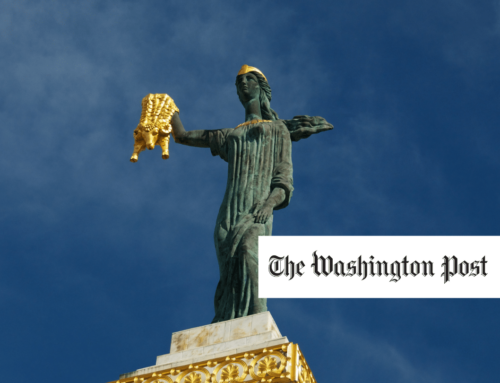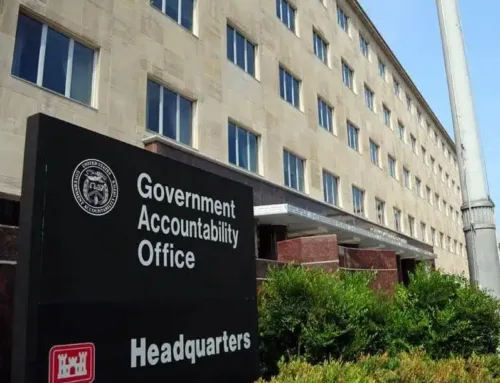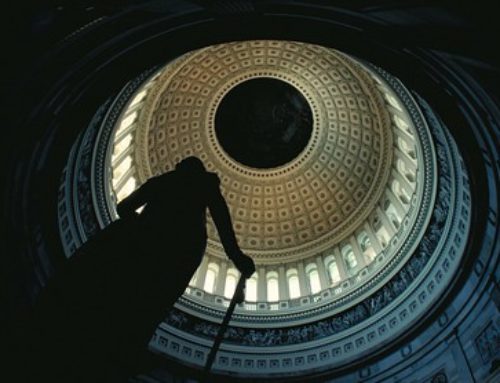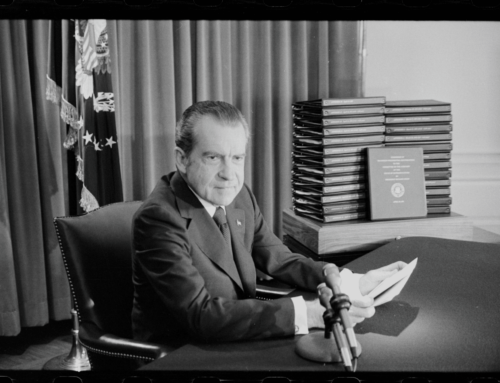Despite the call on Capitol Hill for fiscal belt tightening to deal with record deficits, the House has shown an unprecedented hunger for member projects, or earmarks, in its recently released version of the highway bill. Last week, the House Transportation and Infrastructure Committee released a massive list of these projects that will be added to
H.R. 3 (Transportation Equity Act: A Legacy for Users [TEA-LU]), and there is much more to come before this bill becomes law.
Congress was presented with a golden opportunity to practice fiscal restraint, but opted instead to bring home the bacon in the form of bridges, horse trails, museums, and water taxis; almost everything and anything gets a piece of the action in this bill. In short, there are special interest projects for every Congressional district in the nation. Lawmakers have been blinded by their greed and pork addiction and have forgotten that our nation is in a budgetary crisis.
Taxpayers for Common Sense (TCS) created a database of the earmarks in the manager’s committee amendment, and found 3,736 earmarks worth a total of $10,033,288,279. Thus far, the bill contains 3,315 “high priority projects” worth $8,911,027,279; 414 “bus and bus facility projects” totaling $969,861,000; and various other projects totaling $152,400,000. Most or all of these projects were requested by individual lawmakers, and are included in the bill at the discretion of the Chairman.
Highlights of some of the more egregious projects include:
•$3,000,000 – Renovate and expand National Packard Museum and adjacent Packard facilities in Warren, OH.
•$300,000 – Purchase trolley bus for Yonkers, New York.
•$2,500,000 – Landscaping enhancements along the Ronald Reagan Freeway Route 118
in California for aesthetic purposes.
•$1,000,000 – Fund reconstruction of the home of James Madison in Orange, VA.
•$7,268,486 – For the Vermont Association of Snow Travelers to build the Lamoille Valley Rail Trail, a new snowmobile trail in Vermont. This trail would be part of the network of trails managed by VAST, a private organization in Vermont that builds and maintains these facilities.
•$1,500,000 – A welcome center is planned in Enumclaw, Washington to serve as a welcome to Mt. Ranier.
•$5,500,000 – Rehabilitate the roadways around the soon to be built East Baltimore Life Science Park, which will cost the state of Maryland $26.5 million over five years. This will be 22 acres of an ongoing 80-acre redevelopment of East Baltimore near Johns Hopkins, and will include research space, a biotech incubator for startups, a new mass transit connection, and green space.
•$1,000,000 – Parking facility in Peoria, Illinois.
•$750,000 – Construction of horse riding trails at the High Knob Horse Trails and associated facilities in High Knob area of Jefferson-National Forest
•$500,000 – Sidewalks and landscaping in Glennville, Georgia.
•$500,000 – Reconstruction of street, sidewalks and curbs outside of Museum of Modern Art in New York City.
•$50,000 – Enhance road and transportation facilities in the vicinity of the BrooklynChildren's Museum, New York.
•$540,000 – Establish transportation museum on Navy Pier.
•$1,500,000 – Planning and engineering for The American Road, The Henry Ford Museum.
•$3,200,000 – Acquire site, design and construction of interpretative center, enhancement of trail corridor in the Daniel Boone Wilderness Trail Corridor.
•$1,500,000 – Upgrade roads in Itta Bena (U.S. Hwy 82 and 7) and in vicinity of Viking Range Corp. (U.S. Hwy 7 and 49) in Leflore, Mississippi.
•$1,500,000 – Planning, design, site acquisition and construction for trail system and visitors center on Blue Ridge Parkway in Virginia at the Rocky Knob Heritage Center.
•$850,000 – Construction of bicycle and trolley path in Hattiesburg, Mississippi.
•$377,500 – Construct parking facility and improve access to Imperial Valley Expo in California.
•$500,000 – Streetscape project to install sidewalks and bicycle trails in Gray, GA.
•$1,500,000 – Install lighting/steps, upgrade existing trail system and equip interpretative center with visitor information at the Blue Ridge Music Center in Virginia.
•$500,000 – Construct Talladega Mountains Natural Resource Center in Alabama.
•$4,000,000 – Graffiti Elimination Program including Kings Highway from Ocean Parkway to McDonald Avenue in Queens and Brooklyn.
•$3,000,000 – Planning, design, and construction of a bridge joining the Island of Gravina to the Community of Ketchikan, Alaska. Rep. Young increased the funding for the project to $175 million in the final bill.
•$14,000,000 – Construction of I-69 between Evansville and Indianapolis, Indiana, part of a NAFTA corridor from Canada to Mexico that will cost taxpayers $10 billion or more in total.
•$14,000,000 – Reconstruction of the I-40 Crosstown Expressway from I-44 to I-35 in Oklahoma City, Oklahoma. Rep. Istook, the project's biggest champion, has gone to great lengths to secure funding for this project. During the appropriations process, Rep. Istook penalized Amtrak supporters in the House by removing funding for their pet projects, and then used that money to fund this project with tens of millions of dollars.
•$1,705,000 – Reconstruction and conversion of Union Station to establish a transportation museum.
•$40,000 – Trolley barn in Harrison, AR.
•$2,000,000 – Parking facility in Bozeman, MT.
•$1,040,000 – Transportation museum on the Navy Pier in Chicago, IL (two earmarks).
While the House intends to stick to the administration’s call for a $284 billion bill, by the time it hits the president’s desk seven percent of the bill’s funding will likely be earmarked. This drives up the cost of the bill and takes control away the local officials who are on the frontlines of dealing with transportation troubles. Congress is legislatively micromanaging our transportation system down a road to ruin as congestion increases and our bridges and roads crumble.
While $10 billion is certainly a tidy sum, it pales in comparison to the total amount of earmarks that will be in the final bill when it passes. The House bill actually authorizes $11.2 billion in high priority projects, so there is a $2.2 billion slush fund that that the chairman can use to help ensure passage. The bill will also contain an additional $9 billion in earmarks under categories such as corridors of national significance, truck lane demonstration projects, and border infrastructure projects. In total, earmarks are expected to make up about $20 billion out of a total House proposed funding level of $284 billion. Approximately 4.3% of the money contained in all federal spending bills for fiscal year 2005 was earmarked. This makes the 7% earmarking level in the transportation bill far out of line with the increasing level in spending bills as a whole.
By the time this is over, Congress will have packed this with a record level of transportation pork. The political formula was simple: $14 million was the minimum for every district. Anybody who sits on the Transportation and Infrastructure Committee can expect $40-60 million, and House and committee leadership will get $90 million or more.
In total dollars, California is the biggest winner so far with nearly $1.2 billion in earmarks. Delaware receives the smallest share, with only $9.5 million. On a per capita basis, however, Alaska wins going away. Based on the $204 million in earmarks for Alaska in the bill’s current version, $326 would be shipped north for every man, woman, and child in the state. This is just the beginning of Rep. Young’s money grab, however, and before this bill is law, Alaska’s share of earmarks will likely explode. Last year, during the failed attempt to pass a transportation bill, Rep. Young secured nearly $600 million for Alaska, including $375 million for two bridge projects, the Gravina Access project in Ketchikan and the Knik Arm Crossing in Anchorage. He has already said in no uncertain terms that Alaska can expect the same level of funding this year.
The next closest state on a per capita basis is Oregon, which receives $60.33 per capita, less than 1/5 as much as Alaska. Delaware finishes last, receiving only $12.12 per capita in projects. The national average per capita is $35.14. One noticeable aspect of the per capita data is the narrow range of per capita funding. Thirty-five states receive between $20 and $40 in earmarks per capita; forty-one states receive between $20 and $50 in earmarks per capita. It is unlikely that this tight distribution will be maintained, however. House leadership and members of the Transportation and Infrastructure Committee have historically been more richly rewarded in terms of total earmarks, and this will skew the per capita numbers in favor of those states.
The Earmarking Problem
The biggest problem with earmarks is that they drive up the cost of the transportation bill. If the $284 billion figure holds up, 7% of the bill will be earmarked before a penny is distributed to the states. Unfortunately, a hallmark of our transportation legislation has become the amount of pork it contains, and not the good transportation system it is paying for.
Lawmakers love the transportation bill (and yearly transportation appropriations bills) because they can bring home the bacon to their districts in a very big way. But they are scoring dollars for projects regardless of whether those projects are included in local or state transportation plans, comply with federal law, or enjoy broad local support. As a result, Congress improperly bypasses the decision-making authority of transportation agencies at all levels of government and wrestles transportation decision-making away from the public.
The Solution
Only a handful of budget hawks have expressed real concern over the out-of-control earmarking process, so the problem has spun out of control. While the transportation bill should be kept as lean as possible, Rep. Young has continually repeated his mantra that he intends to “stuff it like a turkey.” The level of Congressional earmarking needs to be kept in check, especially given the nation’s dire budget outlook. In cases where earmarks are deemed truly necessary and are included in the bill, the public needs to be informed regarding who has requested the dollars and how they will be spent.
To accomplish these goals, Taxpayers for Common Sense recommends the following:
1) Set the maximum number of allowable earmarks (administration and congressional) at no greater than 50 percent of the previous year's levels for the next 5 years.
2) Make the name of the requesting member of Congress available for each earmark in the legislation.
3) Make all earmark request letters available online.
4) Strictly enforce existing rules that disallow the addition of earmarks during conference negotiations.
5) Provide historical funding levels for earmarked programs over the last 10 years.
6) Require joint House-Senate budget agreements to be passed prior to appropriations legislation. Absent this agreement, require a continuing resolution at the previous year's budget levels.
Instituting these reforms would shave billions of dollars off the federal budget at a time when record deficits are forcing every branch of government to tighten their belts. Just as important, the public would have the documentation necessary to fully understand the earmarking and appropriations process.







Get Social